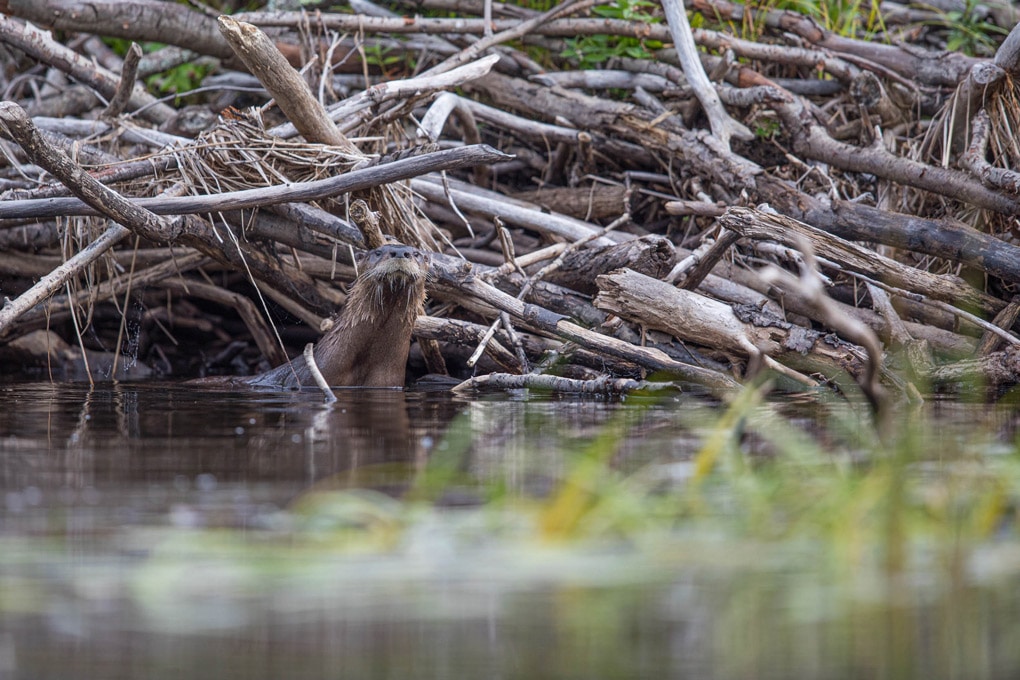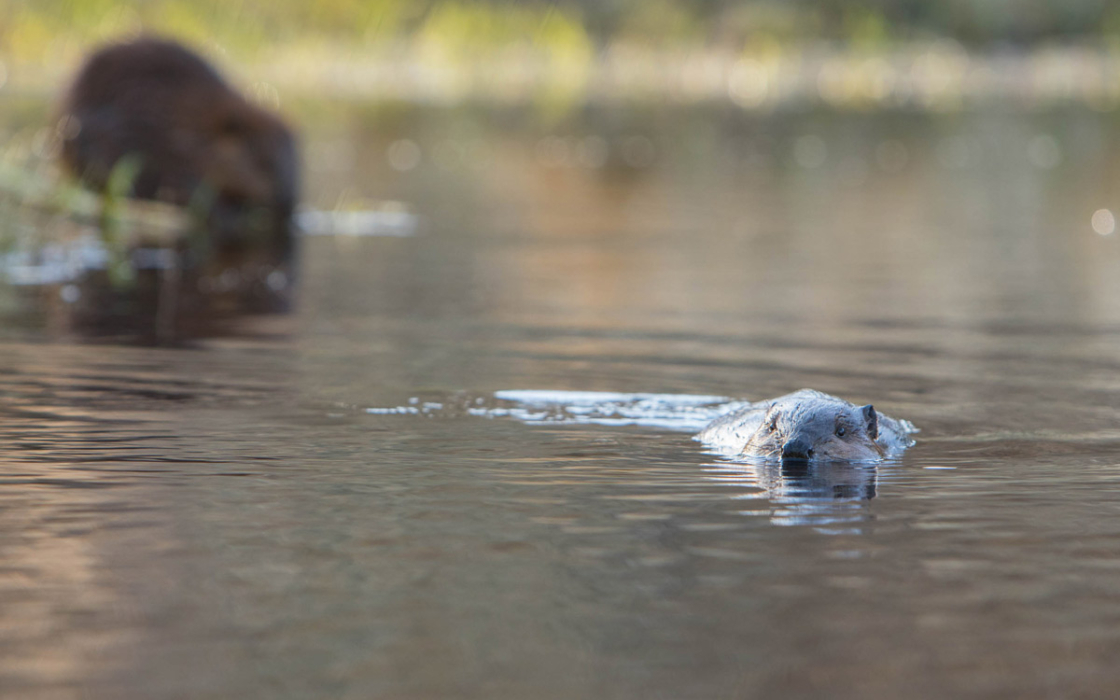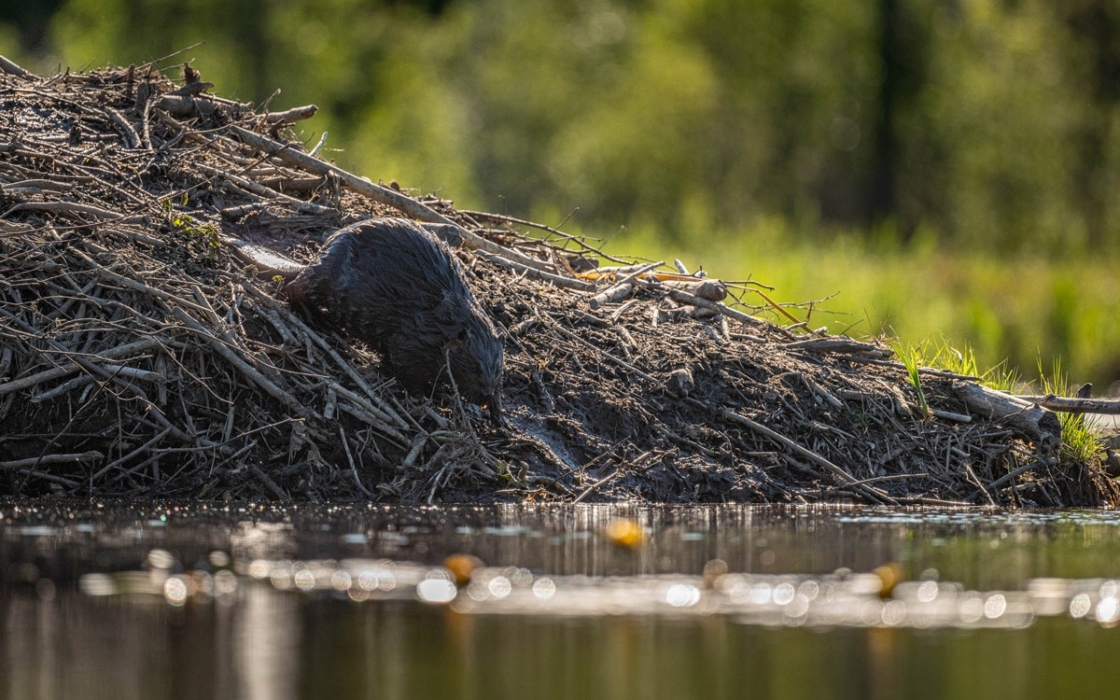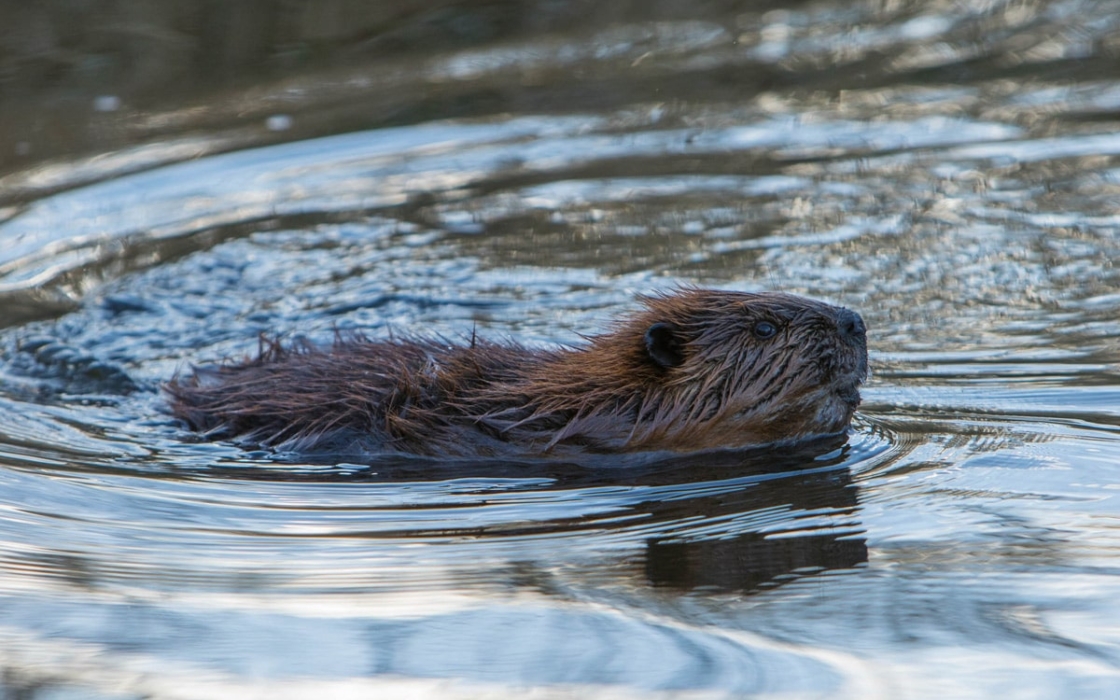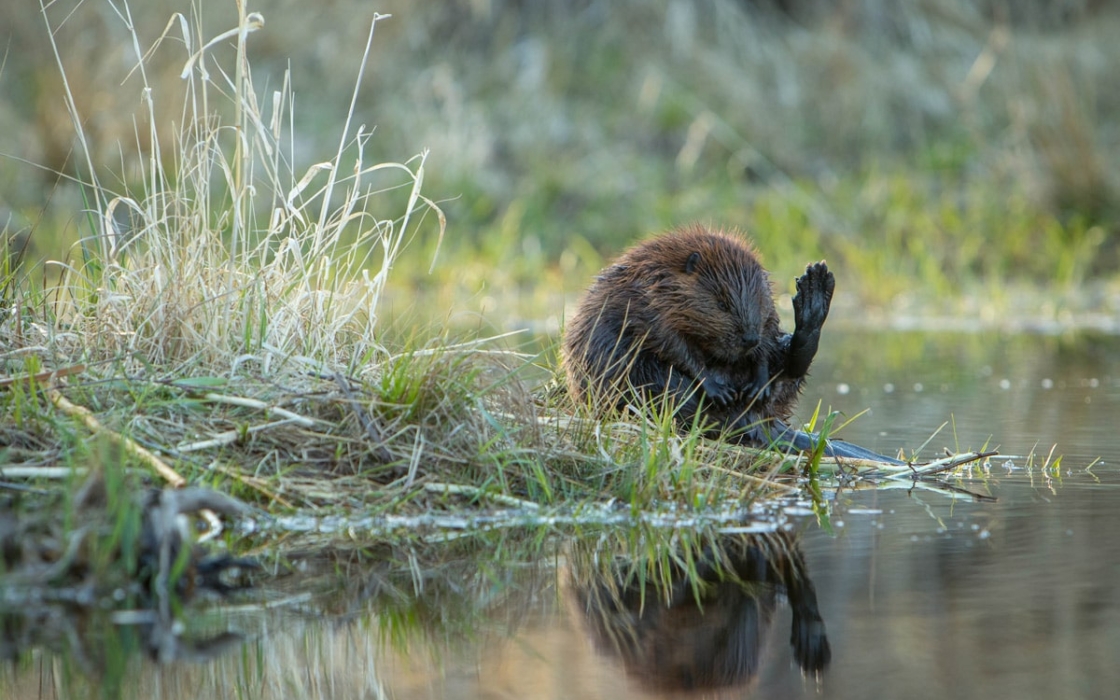The distinct slap of a tail lets me know I am in special area. Beavers are here, which is an indication of newly formed wildlife habitat and changes in the landscape that cannot be replicated by any other ecological process. It alters the landscape in every way – including forest composition, wildlife distribution, and diversity in plant life. I spend most of my time working these areas, they are uniquely beautiful and provide insight on how important the beavers are to the ecosystem.
Beavers are ecosystem engineers that alter landscapes on a drastic scale. Prior to European settlement it was estimated the North American population ranged from 60-400 million beavers. In the 1700 and 1800’s, beavers were heavily hunted and trapped, made into felt hats and perfume. Demand increased for beavers and they were largely exterminated in North America and without beavers, regions of the country dominated by lakes, rivers and wetlands were drastically changed. Fast forward to today and beaver populations have rebounded to an estimated 6-12 million, once again aiding the process of landscape engineering.
Beaver dams stop rivers and streams, create ponds and wetlands where there were none, which increases wildlife habitat and natural forestry. When the dam deteriorates, the river reclaims its flow, and the process starts again.
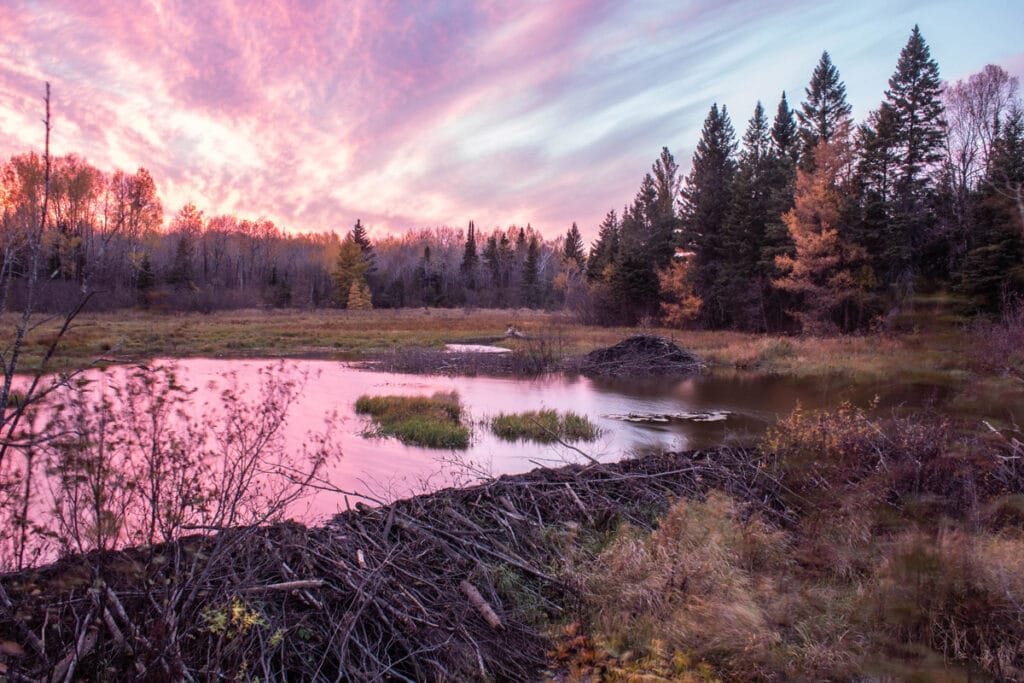
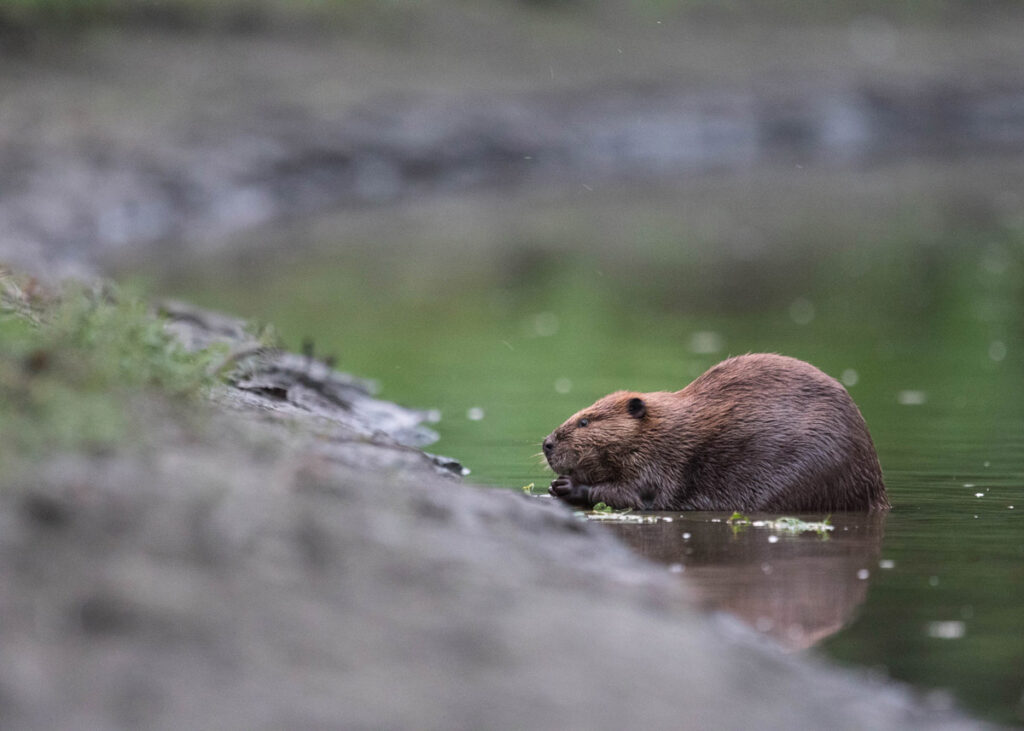
It is thought that sound of rushing water triggers an instinctive response and results in the beavers damming the flowing waters. This creates new habitat increases riparian areas and fosters aquatic vegetation that are beneficial to a multitude of species. A new dam slows the flow of water, allowing invertebrates, amphibians, small fish, waterfowl and other mammals to utilize the new resources that come with the creation of a large wetland. The wetlands also help increase water retention, recharge, and store sediment, and increase the fertility of the flooded land. Beavers continue to create new dams throughout their life and continually alter large tracts of the landscape.
Beavers can live from 10-15 years of age and on average have 2-5 kits a year. They are monogamous, living in groups consisting of yearlings and young of that season. They build their lodges and dams using mud, vegetation, and a variety of woody plants. They build dams to increase their habitat, access to food sources and protect from predators such a wolves.
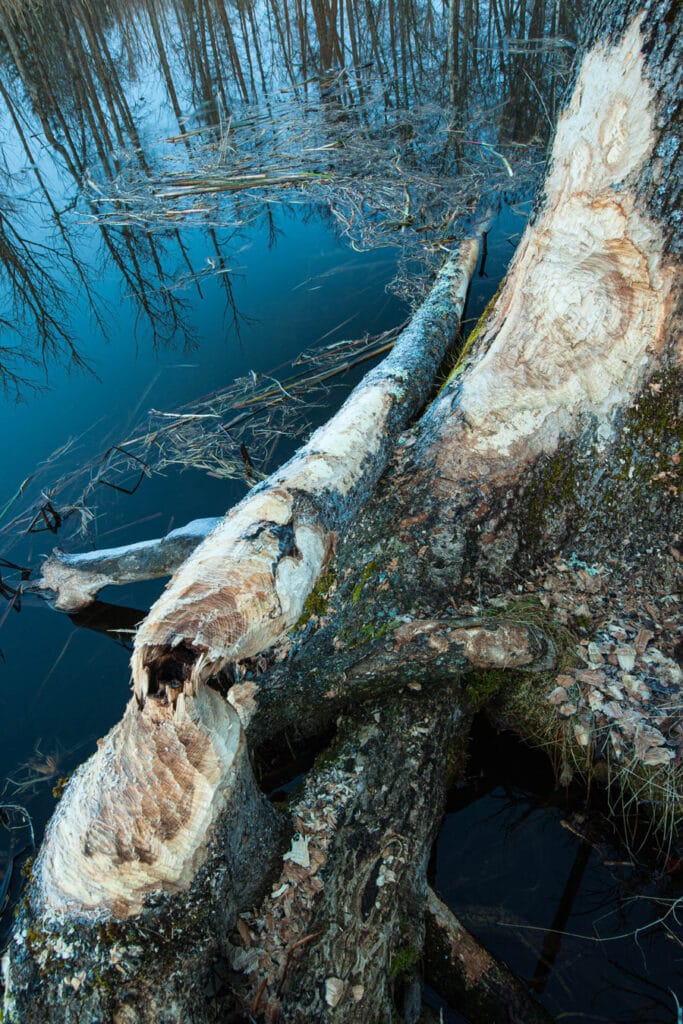
Human-beaver conflict arises from our desire to live along or near waterways. Beaver dams can result in flooded roads, buildings and agricultural fields. Fortunately, there are strategies for barring, removing or redirecting the beavers’ activities.
Over the years I have revisited dams to photograph wildlife, and each year they are different. I use these locations to photograph moose and waterfowl, and the riparian areas that serve as wildlife corridors are extremely useful to document wildlife. I’ve seen a huge array of species traveling by beaver dam, including Canada lynx, black bears, wolves, otters and an array of weasel species. The aforementioned species don’t use these areas just as a means of travel, but also for feeding. Beaver ponds and the surrounding areas are teeming with herbaceous plants and prey species that many species find desirable. Even after the beaver family abandons a pond and lodge, it serves as valuable habitat. A few years ago, I was paddling a river full of abandoned lodges and came upon a family of otters that was using a lodge as a den site. I could hear the otter family inside, communicating with one another. Just a month ago I was sitting along a dam, photographing a cow moose with twin calves, watching beavers as they repaired their lodge, and an assortment of waterfowl that utilized the resources created by the beavers.
All of these encounters have resulted in a love for a species that I once turned my back to, now making one of my top 5 favorite species of wildlife. Next time you encounter an active dam and lodge, grab a book and sit there for the day to observe wildlife and listen to the biodiversity surrounding it, and make sure to thank the beavers for it.
